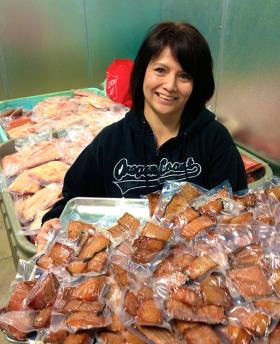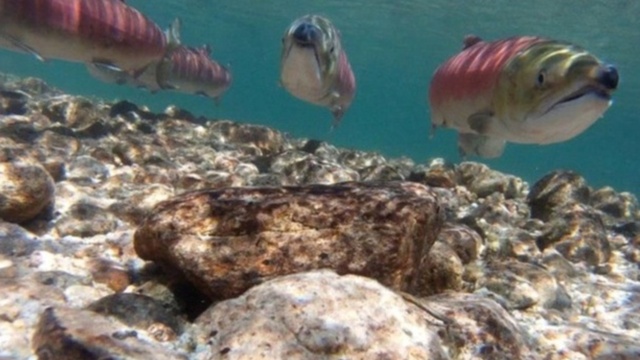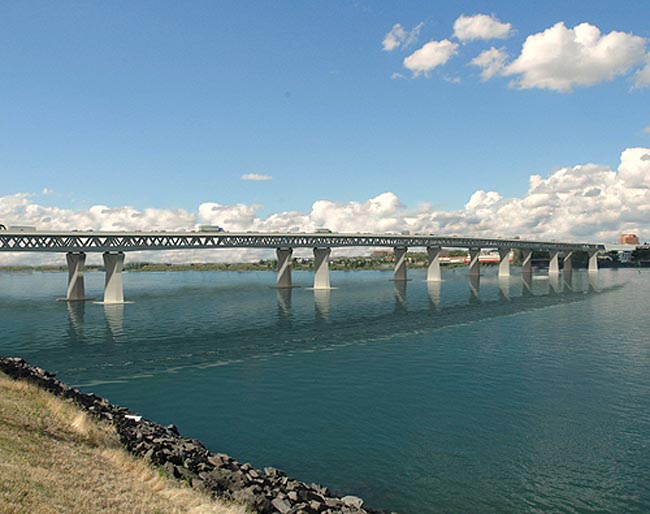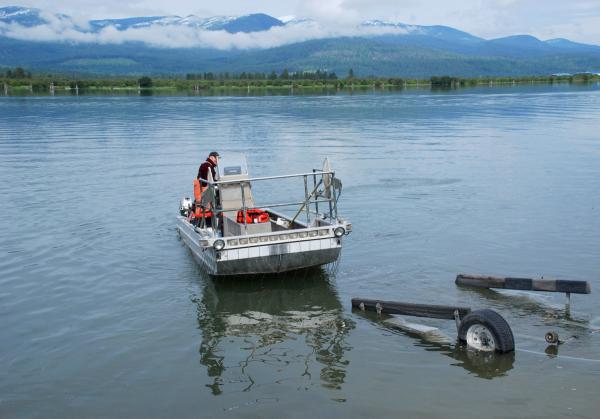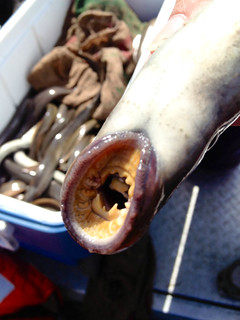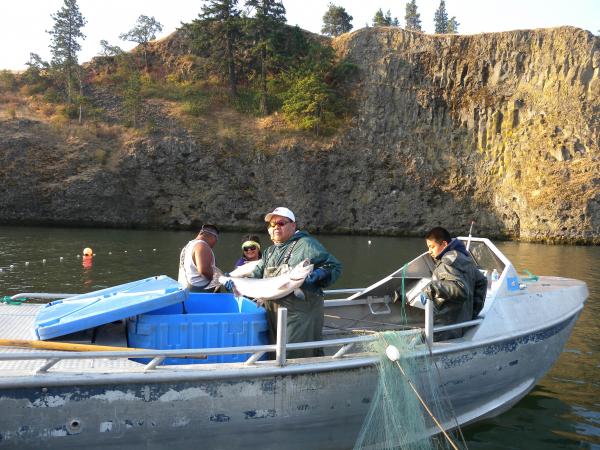By Anna King, NW News Network
In the Northwest, Native Americans have caught and traded fish along the banks of the Columbia River for eons. Nowadays, natives sell just-caught fish out of coolers roadside.
This weekend, one native entrepreneur is opening her own brick-and-mortar fish shop in Cascade Locks, Ore,. called the Brigham Fish Market.
Kim Brigham Campbell is a petite woman with sleek black hair, razored just below her chin. And a laid-back, warm persona.
We walk past the clean, bright front counter to the room behind.
“In the back here we have our ice machine and our 20 by 20 freezer cooler,” she says.
“We’re getting a good variety [of fish]. There is our smoked fish, there are bellies and stuff for bait for sturgeon, there is sturgeon, we have some clam chowder that we are going to have on opening day, and more varieties of salmon.”
Bins of filets are all packaged up tight in glossy vacuum packs ready for sale.
From Brigham Campbell’s store you can see the Columbia River where these fish are plucked fresh from the chilly water. In this cooler is a precious half-year of hard work.
Brigham Campbell’s Native American family is well-known on the lower Columbia River. She’s a member of the Confederated Tribes of the Umatilla Reservation. Her father fishes, her uncles, her cousins, her sister, her children.
Brigham Campbell says her family name is tied to this store, and that means she’s had a few sleepless nights lately.
“I’ve been really comfortable building the building,” she says. “And now that it’s time to open the building, I hope that it’s everything that I want it to be and everything that people are expecting of me.”
To build the store, Brigham Campbell and her husband took out loans, cashed in a 401(k), struck a land deal with the nearby port and even borrowed money from her parents.
Brigham Campbell herself is a mother of two teenagers, an independent hairdresser and has managed to guide the construction of this new shop.
I ask her who she is most excited to see come through your the front doors.
“My parents, of course,” she says. “I’ll probably cry [when they walk through.] It will be a good thing.”
And getting to this opening hasn’t always been easy. There’s been some talk that she’s taking away from tradition, or changing things too much.
Still, she says many in her tribal community have been supportive.
“In the spring time, April or May I’m going to have a blessing,” says Brigham Campbell. “I’m going to have some drummers and singers come down and do a bigger grand opening. This is just my soft opening. I just need to open my doors. In the springtime I want to honor everyone that’s helped me and the blessing from the tribe.”
Blessing ceremonies for fishing families along the Columbia River isn’t new. For centuries Brigham Campbell’s ancestors prospered from the Northwest’s rivers and land.
With this bright new store, Brigham Campbell says she’s reasserting her belief in the Columbia River. That the wide waters will provide for her family’s future, as it has in the past.
The Brigham Fish Market opens in Cascade Locks, Oregon, at noon on Saturday, February 8.

